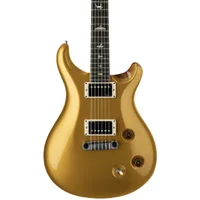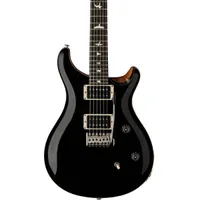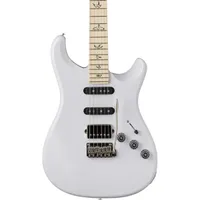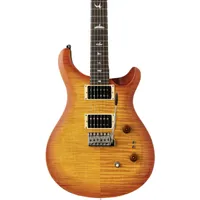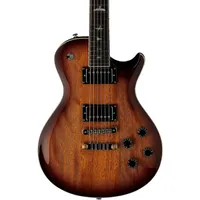Best PRS Guitars 2025: PRS models for every playing style
From the iconic Custom 24 and top-of-the-range signature guitars to budget-friendly SE models

To maintain any kind of position in the guitar market alongside the likes of Fender and Gibson, let alone be seen as equally prestigious is no mean feat, yet PRS has managed that build serious equity with guitarists ever since they burst onto the market in the mid-80s. Mixing a distinct look with a player-centric design, the best PRS guitars are more than a match for the biggest names in the industry.
Over the years myself and the Guitar Player team has played and tested the vast majority of PRS guitar releases, from the divisive Silver Sky through to their more esoteric baritone and seven-string models. Combined with decades of experience testing, we've put our real-world experience of these guitars into a handy list to help you decide which you should buy.
If you want the very best of the best, then have a look at PRS Custom 24, which is the guitar that first put PRS on the map and remains one of their best inventions. For those without loads of cash to spare, the PRS SE CE 24 delivers all of the PRS signature looks, playability, and tone, all while costing just below the $500 mark.
If you're not sure which guitar to go for or you'd just like to learn more about PRS guitars, have a look at our how to choose and FAQ sections for more in-depth info. To see the very best PRS guitars available right now, just keep on scrolling.
My top picks
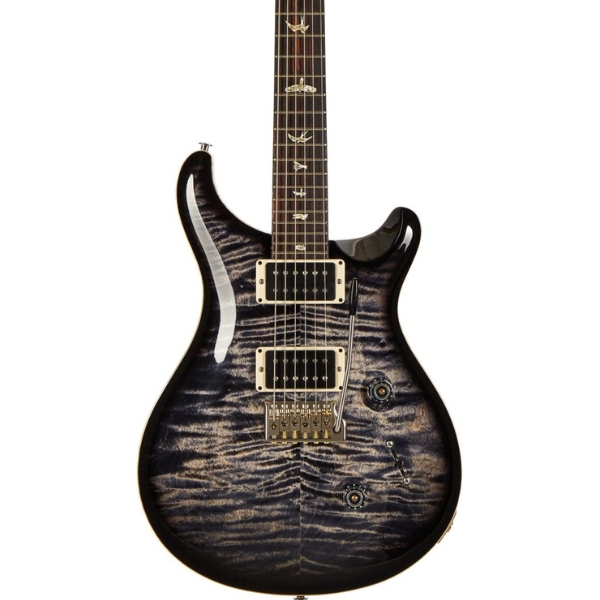
Probably the most popular of all the PRS models, the PRS Custom 24 is in my opinion the flagship instrument of the PRS range. Designed to be part Fender and part Gibson, it was the guitar that launched the company, and remains one of the best models the company manufactures.
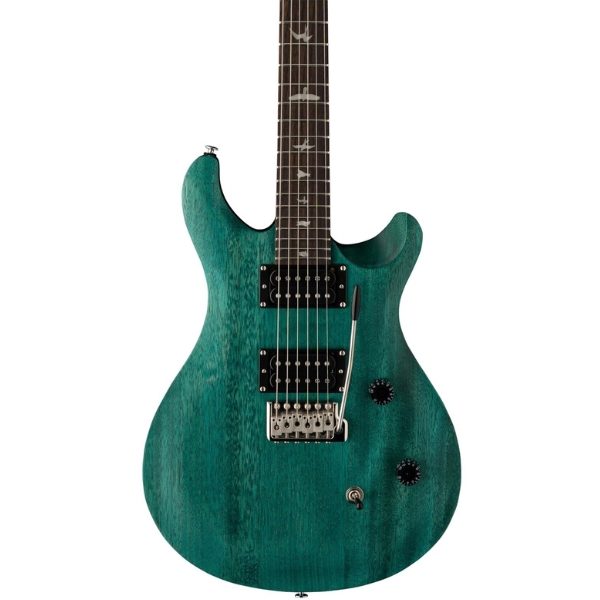
Despite coming in just below the $500 mark the PRS SE CE 24 very much feels like a 'proper' PRS. It's got excellent playability, versatile humbuckers with coil split, and a fantastic tremolo. Even if you're not a beginner there's a lot to love about this great guitar, and not just that price point.
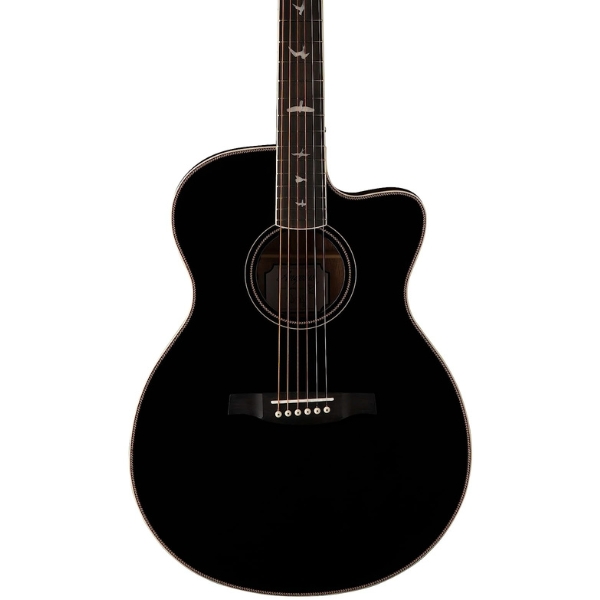
If you're after an acoustic PRS, my top choice in terms of tone and value for money would be the PRS SE A20E. It's a cutaway acoustic with a balanced tonality that has plenty of midrange energy and a bright top end. The distinctive looks mean it will stand out from other acoustic too.
Best overall

1. PRS Custom 24
Our expert review:
Specifications
Reasons to buy
Reasons to avoid
If you were to ask 100 guitar players to name a PRS model, at the top of the board, without a shadow of a doubt, would be the Custom 24. This is hardly surprising since it was the guitar that kicked off PRS, making its debut at the '85 NAMM show.
Favored by session players for combining the best elements from Fender and Gibson, this modern classic is sure to get any job done. The 25" scale length neck is set into a mahogany body, with a maple top, which is adorned with a Strat-style tremolo system. The 85/15 humbucking pickups offer superb clarity, while the five-position switch allows you to access Strat-style tones at the drop of a hat.
This is a Swiss army knife of a guitar and can easily jump from soulful blues to hi-gain metal and everything in between.
Best budget
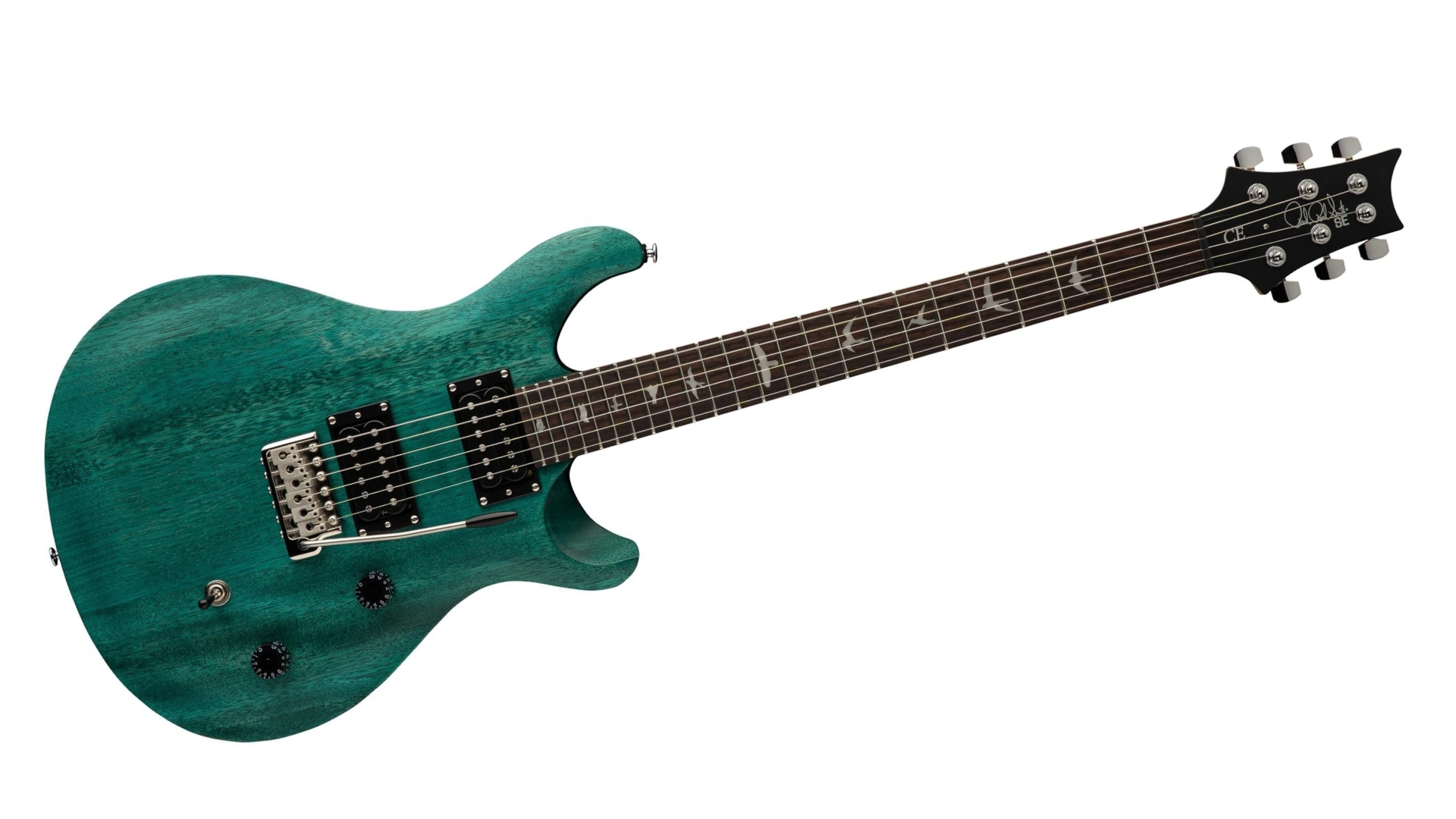
2. PRS SE CE 24
Our expert review:
Specifications
Reasons to buy
Reasons to avoid
Representing the best value for money you can get when it comes to a PRS in my opinion, the PRS SE CE 24 is simply superb value for money. Coming in just below $500, you get an ultra playable instrument that looks and sounds much more expensive than it actually is.
When I was testing the CE 24 alongside a bunch of beginner guitars, I found it stood head and shoulders above the competition. Okay, it wasn't the cheapest out of all on offer, but if you're willing to spend an extra $100-200 on a guitar, the jump in quality is absolutely huge.
The coil split option means you can cover everything from heavy metal through to jazz and blues, with the dual PRS-designed humbuckers delivering some incredible guitar tones. I also found the tremolo worked really well, unlike those on the vast majority of beginner level guitars, the guitar stayed in tune no matter how hard I leant on it.
Best acoustic
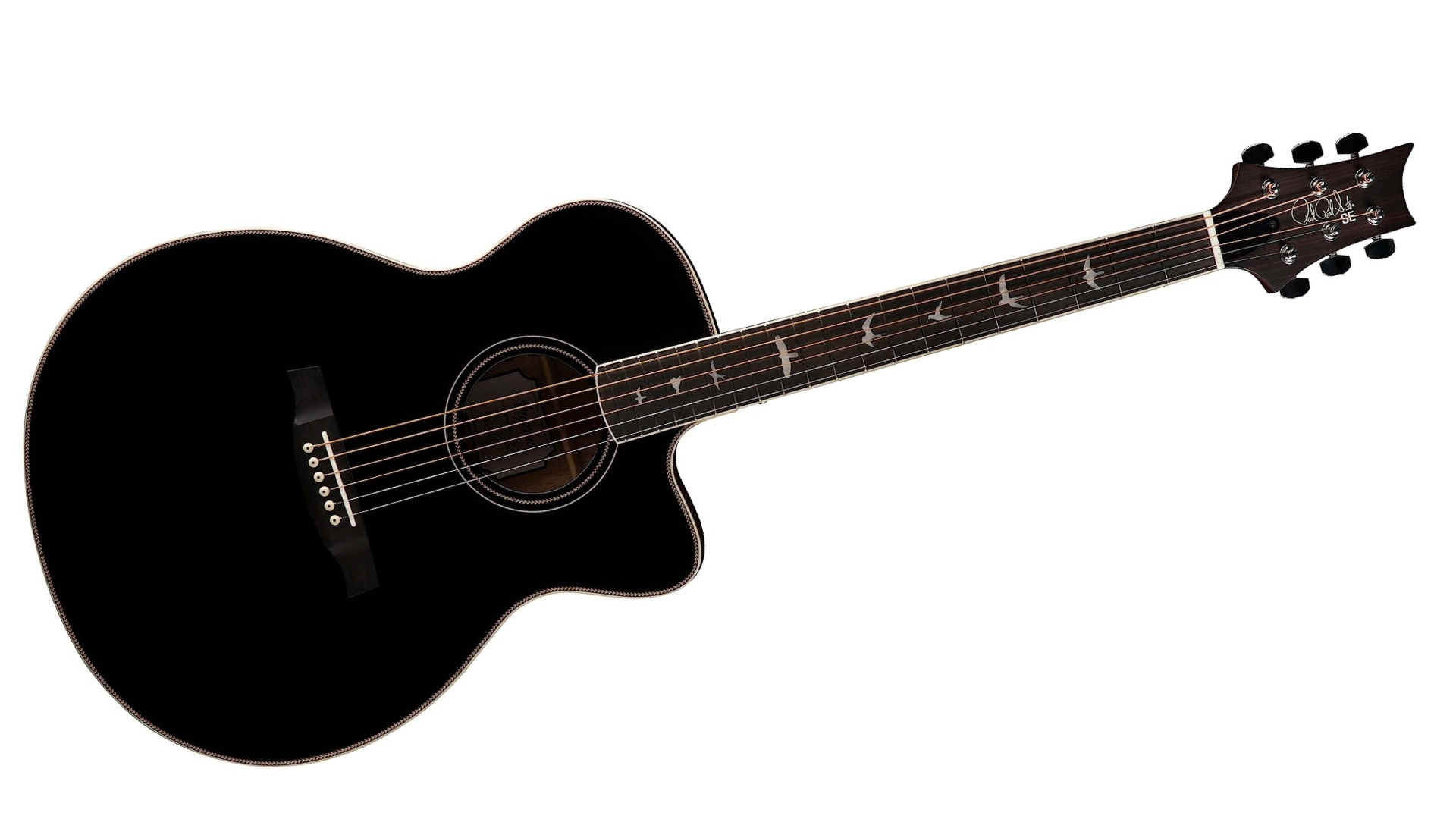
3. PRS SE A20E
Our expert review:
Specifications
Reasons to buy
Reasons to avoid
The SE A20E, which is new for 2022, is the all-mahogany version of PRS’ Angelus mid-sized acoustic. The Mahogany imparts a subtle warmth, which adds richness to the bass while slightly taming the high end. Moreover, it thickens up the mids, making the SE A20E a guitar with some serious mid-range punch.
Its amplified sound comes courtesy of a Fishman Sonitone Pickup system that’s been uniquely custom-voiced by Paul and the Fishman team to sound as close to a natural guitar tone as they could get. Just the same, the preamp, which is stowed discreetly inside the top of the soundhole, has tone and volume controls that enable you to tweak the EQ to your heart’s content.
The SE A20E is a very dapper acoustic, all dressed up with fine accouterments such as a bone saddle, ebony bridge and fretboard, bird inlays, cream bindings, herringbone purflings, and a handsome black top. With Paul’s signature on the headstock, you’d think it would be priced way out of reach, but it’s actually surprisingly affordable.
Best for metal
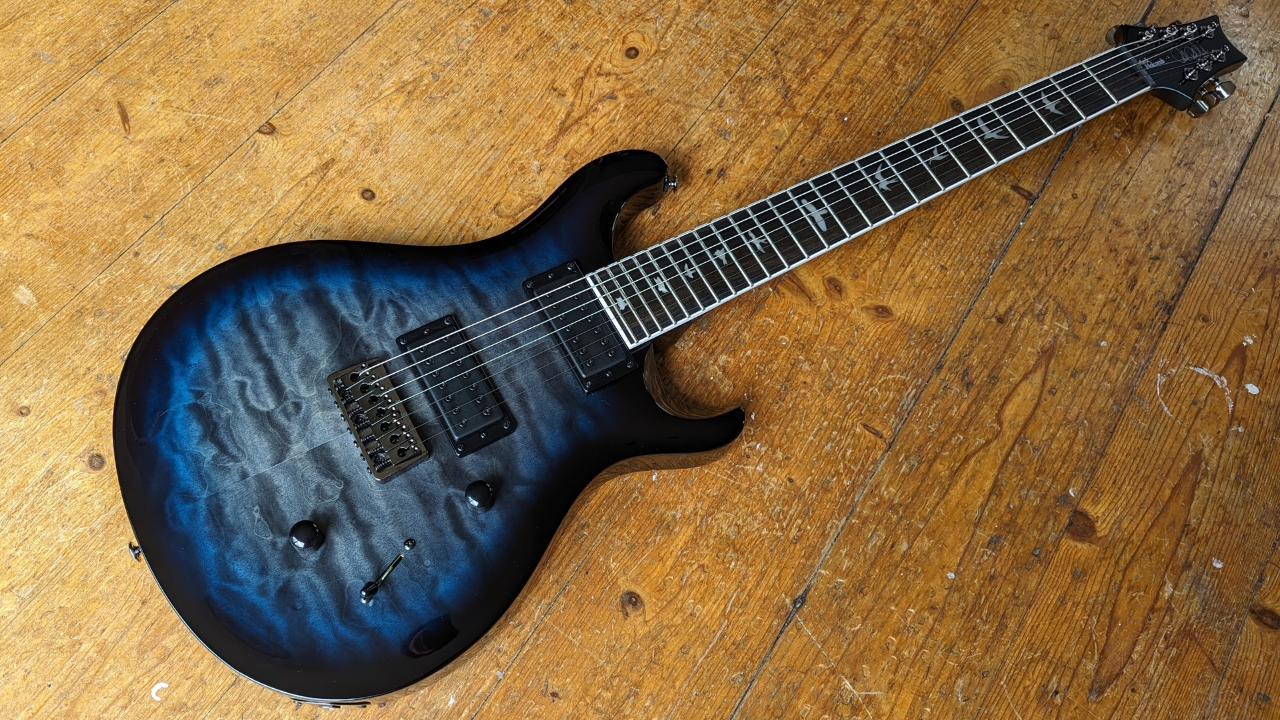
Specifications
Reasons to buy
Reasons to avoid
Just because you enjoy heavier style of music doesn't mean you can't get a PRS guitar to suit your style. The PRS SE Mark Holcomb SVN can do everything from high gain precision djent tones to warm and clean tones, making it a lot more versatile than you'd think for a seven string guitar.
The neck does feel chunkier than a six string of course, but it's not as large as you might think. It did take me a short while to get used to that extra string but once that initial warming up period was over I never felt like I was stunted by the extra heft. You can absolutely shred on this thing.
The pickups are also surprisingly versatile. A lot lower output than you might expect from a heavy metal guitar, in the bridge position the Seymour Duncan humbucker delivers uber-precise breakdowns and cutting rhythm tones aplenty, while the neck position gives a warmer, more rounded sound that's great for nuanced leads and clean passages.
Best for blues
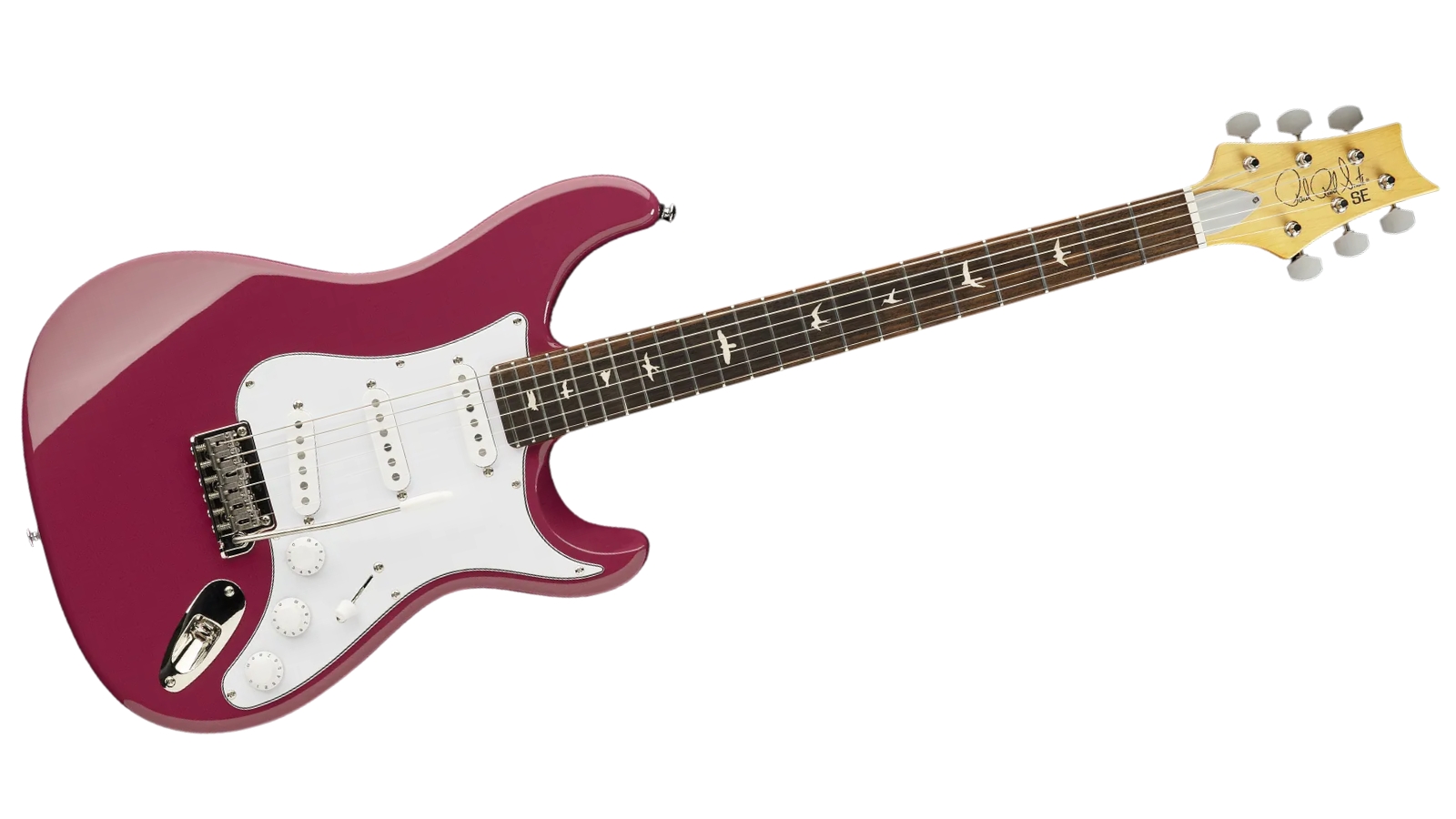
Specifications
Reasons to buy
Reasons to avoid
It’s the one the world was waiting for, an affordable version of the most controversial PRS guitar ever, finally with us. John and Paul’s Fender-inspired S-shape certainly divided opinion back in 2018, but for many, the most pressing question was, ‘when are we going to see an affordable SE version?’
The biggest change is the body material, which is now Poplar rather than Alder. However, we don’t notice any significant difference in voicing, this is a guitar that still has that characteristic S-shape tone in spades, whatever the tonewood. It’s a similar tonal story with the rest of the build. It's 635JM “S” pickups aren’t quite the same as the 635JM pups in the pricier Silver Sky, but they’re darned close. To our ears, the original versions boast a touch more clarity, but that’s about it.
The other changes are also subtle – the locking tuners are gone, the nut is synthetic, the finish is poly rather than nitro, the fingerboard radius is slightly different, and so on – but so what? None of them detract from the sound or authenticity of this guitar. At this price, the SE Silver Sky is not just a good deal, it’s still very much the real deal.
Best for jazz
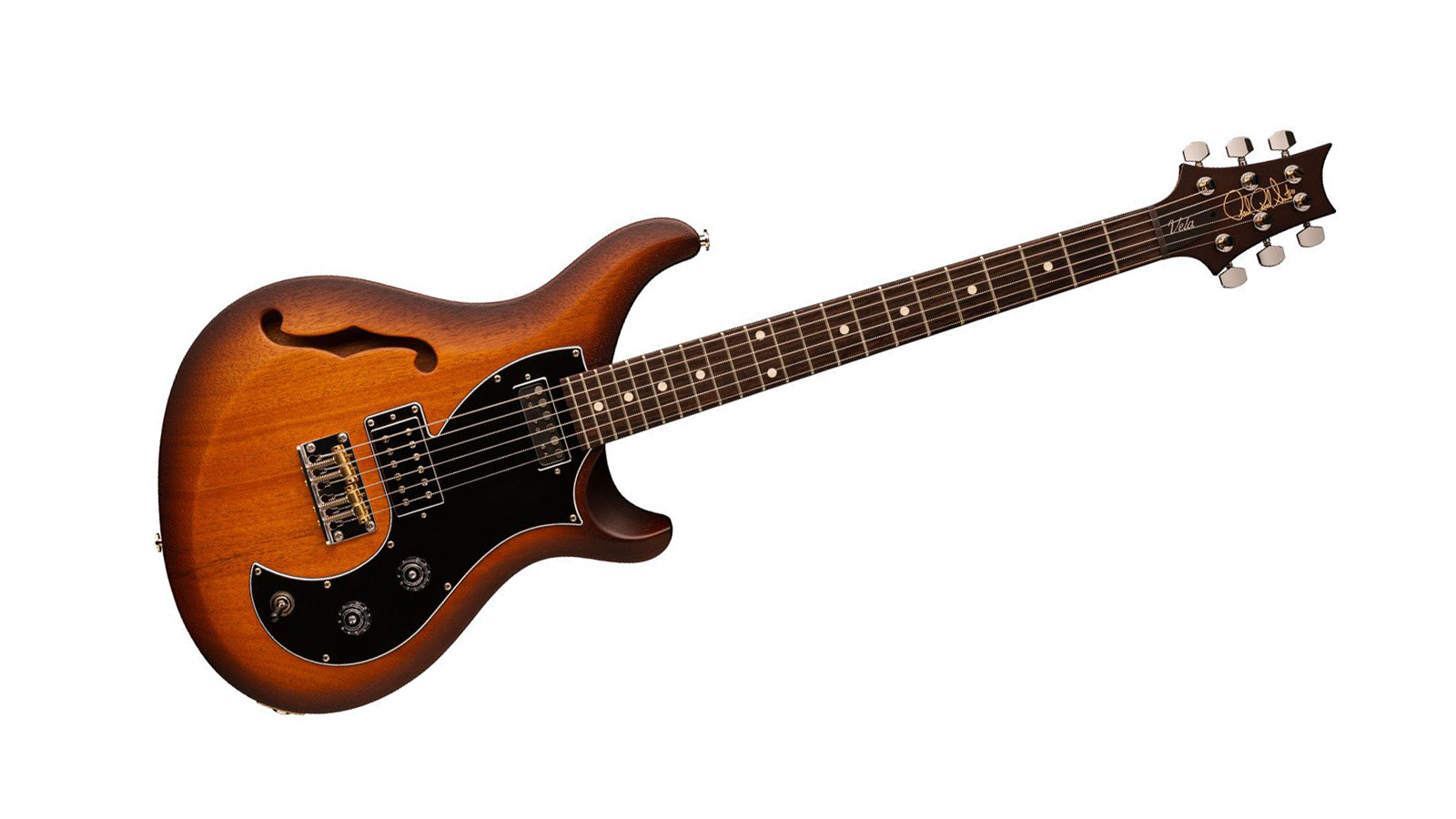
6. PRS S2 Vela Semi-Hollow
Our expert review:
Specifications
Reasons to buy
Reasons to avoid
Next up is a semi-hollow offset guitar with bags of personality - and the first from the S2 range to be featured in this guide - the PRS S2 Vela Semi-Hollow. For those who aren't familiar, the S2 range is a collection of guitars that take a back-to-basics approach, opting for a more straightforward design.
The Vela is a little more basic when compared to the likes of the Custom 24. Although the flamboyant flamed maple top, iconic bird inlays and intricate tremolo system are absent, this quirky guitar still shares a lot of the DNA that makes it a Paul Reed Smith instrument.
The sleek curves and effortless playability means this is unmistakably a PRS, while the brass saddle T-type bridge and Type-D Singlecoil pickup bring something new to the table.
Also consider
PRS McCarty
Mahogany body | Mahogany neck | Rosewood fingerboard | 22-frets | HH
This guitar perfectly blends the modern, forward-thinking PRS with the vintage style and sensibilities of the golden age of guitars. This beautiful instrument features a slightly thicker-than-usual mahogany body, with a carved figured maple top - not too dissimilar to a Gibson Les Paul - while the Pattern neck profile is based on the original neck Paul designed before PRS officially began.
★★★★½
PRS CE 24
Mahogany body | Maple neck | Rosewood fingerboard | 24-frets HH
If the original Custom 24 blurs the lines between Fender and Gibson, then the CE24 takes it a step further. This version of the famous Custom 24 sports a bolt-on maple neck, giving this guitar a completely different feel and tonal character. CE stands for Classic Electric and we have to say, it certainly lives up to its name. The neck feels familiar but exciting at the same time. The satin finish is incredibly smooth, and Pattern Thin profile is sure to fit in any player's hands.
★★★★½
PRS Fiore Mark Lettieri
Swamp ash body | Maple neck | Maple fingerboard | 22-frets | HSS
This distinctive guitar strays pretty far from the usual specs you'd expect from Paul Reed Smith. The first of which - and biggest departure - is the inclusion of a swamp ash body. Lettieri has stated that swamp ash is "just kinda my sound" and therefore needed to have that design element in his signature axe. This beautiful body is paired with a 25.5" scale length maple neck with outlined bird inlays and a custom flower truss rod cover.
★★★★½
PRS SE Custom 24
Mahogany body | Maple neck | Rosewood fingerboard | 24-frets | HH
Like its more premium brother, the SE Custom 24 features a mahogany body, but this time the beveled maple top is capped with a flame maple veneer. The impeccably finished maple neck sports the Wide Thin profile, and even includes the bird inlays - although that wasn't always the case.
★★★★½
PRS SE McCarty 594 Singlecut
Mahogany body | Mahogany neck | Rosewood fingerboard | 22-frets | HH
With its 58/15 LT ’S’ pickups, you get a warm and relatively low output that makes them perfect for blues, rock and more. They’re super dynamic, and the mahogany body helps give it a really nice midrange. Each volume knob has push/pull functionality too, allowing for single-coil tones making this a really versatile guitar.
★★★★½
How to choose

PRS have five key ranges of guitars to choose from: Core, Bolt-On, S2 Series, SE Series, and Private Stock. These vary pretty significantly – certainly when it comes to price – so let’s briefly break down what can be expected from each.
1. SE range
You can trust Guitar Player.
Their SE range is PRS’s entry-level offering that is far from entry-level in quality. Manufactured in Indonesia, they may not have the same prestige that an American-made PRS commands, but they are some of the best bang-for-buck guitars money can buy. The quality is still sky high, and there are also some stunning finishes that you’re unlikely to find on any other guitar under $1,000.
2. S2 range
For those wanting to experience an American-made PRS instrument, but without the crazy price tag, you can save a considerable amount by moving to the S2 series – though don’t think these are cheap guitars, they still command a pretty hefty price tag.
S2 guitars differ from the Core and Bolt-On lines by their less flamboyant finishes, which helps to shave down the costs, however they utilize the same pickups as their bigger brothers, so still sound just as incredible. The S2 line also has some unique shapes, including the Vela, a sort of offset PRS shape that is utterly beautiful, particularly in semi-hollow form.
3. Core range
The Core range is the benchmark. PRS’s series by which all of their other instruments are judged. These are premium, USA-made guitars that come at an equally premium price point, with legendary models such as the Custom 24 and McCarty sitting in this range.
Across the Core line, you can expect to find vintage-inspired instruments, along with more modern and speciality designs. While PRS wouldn’t want to put their instruments directly up against other manufacturers, you can consider this the range that would be put against Gibson’s ‘Standard’ and ‘Custom’ line of instruments.
Alongside the Core range is the Bolt-On line of guitars, made to an equally high standard, but using bolt-on neck technology as opposed to set necks, with comfort being a key selling point. In this range you can find guitars such as the Custom 22 and the divisive Silver Sky. These share a similarly premium price tag as the Core range.
4. Private stock
If you’re the other end of the spectrum, and finding the pinnacle in PRS guitars is what you’re looking for, look no further than their Private Stock range. These are extremely exclusive instruments, which only certified dealers will be able to stock.
You can go pretty outlandish with these guitars and spec them however you wish – though this comes at a significant price. As part of that price, your guitar will be personally inspected by both Paul Miles, the Director of Private Stock and, the man himself, Paul Reed Smith, so they will face the highest level of scrutiny before reaching your fingertips.
5. Acoustics
PRS currently builds only three acoustic body styles. The Angelus is a mid-sized cutaway that probably best exemplifies the benefits of Paul’s hybrid X/Classical bracing system. It comes in a variety of tonewoods, all voiced to boast sparkly highs, a sweet mid-range, and a low end that’s full of warmth and clarity. The Angelus is an amazing guitar for fingerstyle but has plenty of projection for flatpicking and loud strumming styles too. Of the range, it might be seen as the best do-it-all model.
If you’re looking for something that excels at strumming, the Tonare models are modestly sized jumbo-shaped guitars that offer more volume and midrange – perfect for bashing out some chords with. As you’d expect though, they are more versatile than just strumming, and sound pretty good at flatpicking and fingerpicking too.
Finally, the brand’s parlor range takes the Tonare body shape and shrinks it. The result is a small guitar with much more depth and projection than you’d expect.
These three models only fit across two of PRS’s ranges, rather than across five ranges like their electrics. Primarily they sit in their SE range, however they also offer Private Stock acoustics, which sit right up there with luthier-made acoustic guitars for quality.
There is a limited run of pre-specced Private Stock acoustic guitars released each year, however, if you want, you can design and specify your own acoustic model. As with the Private Stock electrics, these instruments are one-of-a-kind works of art and their price reflects that.
FAQs
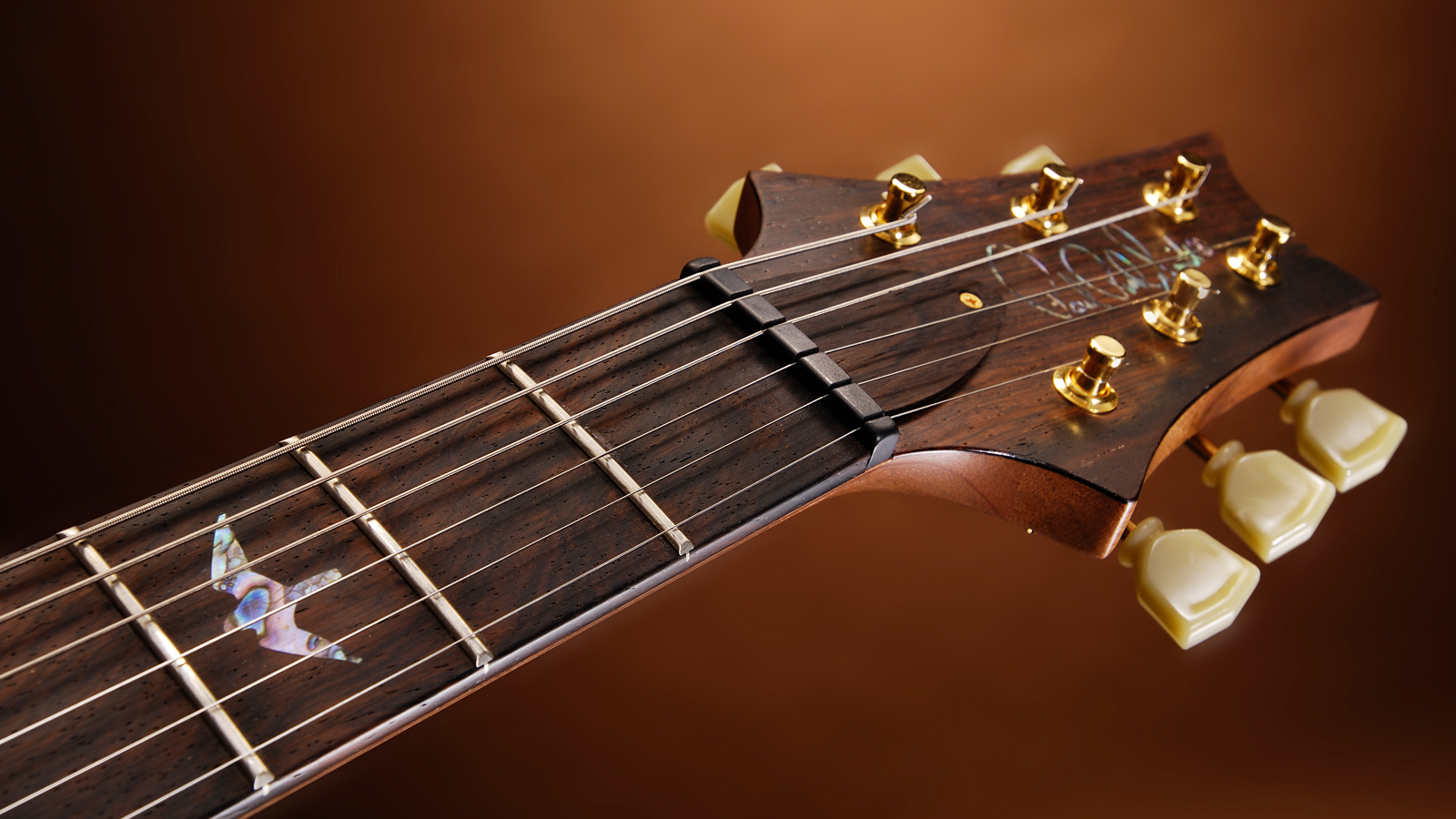
When did PRS start making guitars?
The famous PRS initials come from the company’s founder, Paul Reed Smith. A guitar enthusiast with a fanatic eye for detail and craftsmanship, Paul began his guitar-crafting journey by making guitars for himself and local musicians and selling them at shows.
This grew into selling his instruments to touring musicians at local venues, though this was far from lucrative from the outset, with Paul claiming he would make around one sale for every ten shows. Perseverance and the quality of his product worked eventually though, managing to get his early guitars into the hands of Carlos Santana, Al Di Meola, and Howard Leese.
In 1985, Paul Reed Smith launched their first official Custom model making its debut at that year's NAMM show, after which the company never looked back, now known state-of-the-art guitars pioneering new construction techniques, and solidifying themselves as the gold standard for quality control.
What are the birds on a PRS guitar?
For the bird fans out there, the birds featured on the fretboard are a peregrine falcon, marsh hawk, ruby-throated hummingbird, common tern, Cooper's hawk, kite, sparrow, storm petrel, hawk landing, and a screech owl on a branch.
Why does PRS have birds on the fingerboard?
When you think of PRS guitars, it’s hard not to think of the bird fret inlays. It’s a trademark look, but it was never particularly intended as something to make PRS stand out from the crowd. Way back in 1976 – pre-dating the official launch of PRS! – Paul was working on a guitar for Peter Frampton and just happened to pick birds for the inlays. As far as stumbling on ideas goes, we think this was a particularly good stumble.
Does PRS make acoustic guitars?
Yes! But it took them a long time to cave and a lot of persuasion. That’s because Paul Reed Smith never does anything by halves. If his company was going to start to make acoustic guitars, they had to be just as good as the electrics – a high bar, indeed!
In 2009, a mere 24 years since PRS launched their first electric guitar, they finally debuted an acoustic model. Inspired by an old Torres nylon-string acoustic, Paul developed a unique hybrid X/Classical bracing system that enabled the top to resonate as freely as possible.
And because being just a little innovation wasn’t enough, he also locked the back and sides down so that, acoustically at least, they resembled a speaker cabinet that would provide seemingly impossible levels of projection. The result is an acoustic guitar that has bold amounts of power, but not at the expense of clarity.
How we choose products

At Guitar Player, we live and breathe everything guitar related. It's our passion and we certainly hope this passion comes through in our buyer's guides. Everyone at Guitar Player is an expert in their field and we draw on this knowledge and experience when selecting the products for our guides.
When choosing what we believe to be the best PRS guitars available right now, we combine our hands-on experience, user reviews and testimonies and engage in lengthy discussions with our editorial colleagues to reach a consensus about the top products in any given category.
When making our lists, we pay careful consideration to everything from budget to feature set, playability and durability to come up with an accurate representation of the best electric guitars available right now.
Read more on how we test gear and services at Guitar Player.
Related buying guides
- Check out the best Martin guitars
- On a budget? Here's our list of the best electrics under $1,000
- These are the best acoustic guitar strings
- Plug in with one of the best guitar cables
- Get the best of both worlds with the best acoustic electric guitars
- Freshen up your tone with the best electric guitar strings
- Want an affordable amp? Well, here are the best guitar amps under $1,000
All the latest guitar news, interviews, lessons, reviews, deals and more, direct to your inbox!
First and foremost, I'm a guitar enthusiast – a fanatic, some might say. I'm a firm believer that most of the world's problems can be solved with a Gibson SG and a catastrophically loud amp. Before writing about guitars for a living as a Senior Deals Writer on Guitar Player, I worked in music retail for 7 years, giving advice on guitars, basses, drums, pianos, and PA systems. I also have a passion for live sound; I'm a fully qualified sound engineer with experience working in various venues in Scotland.
- Connor Godfrey
- Simon Fellows
- Matt McCrackenJunior Deals Writer
- Richard Blenkinsop
